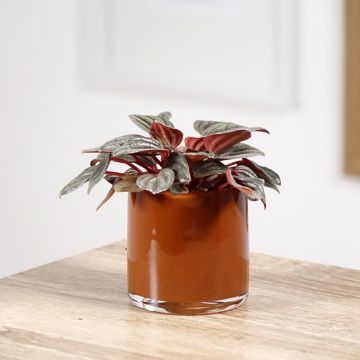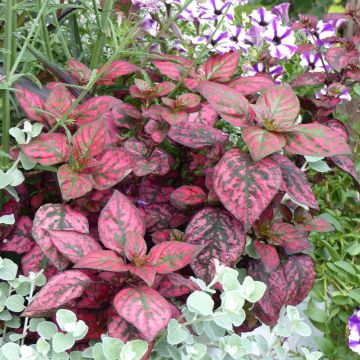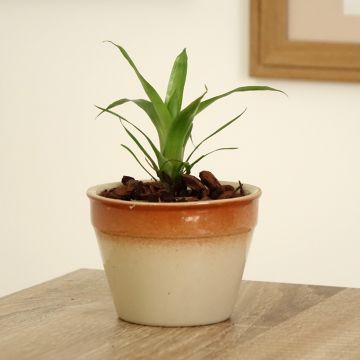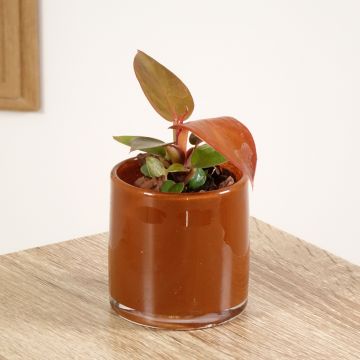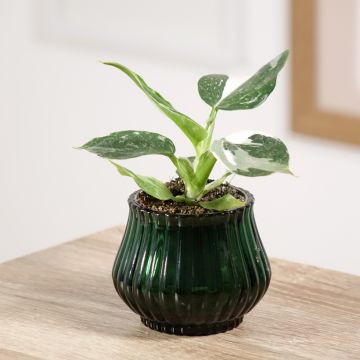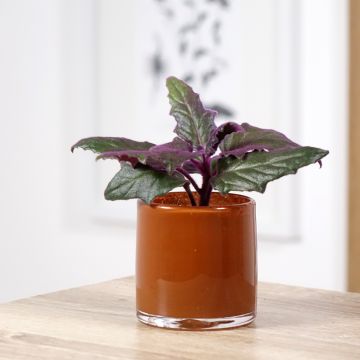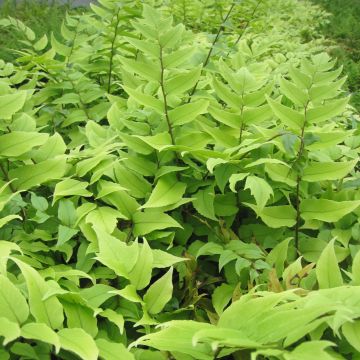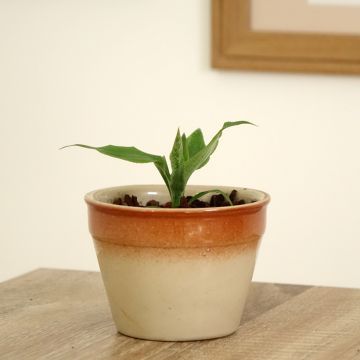

Saxifraga stolonifera Variegata - Creeping saxifrage
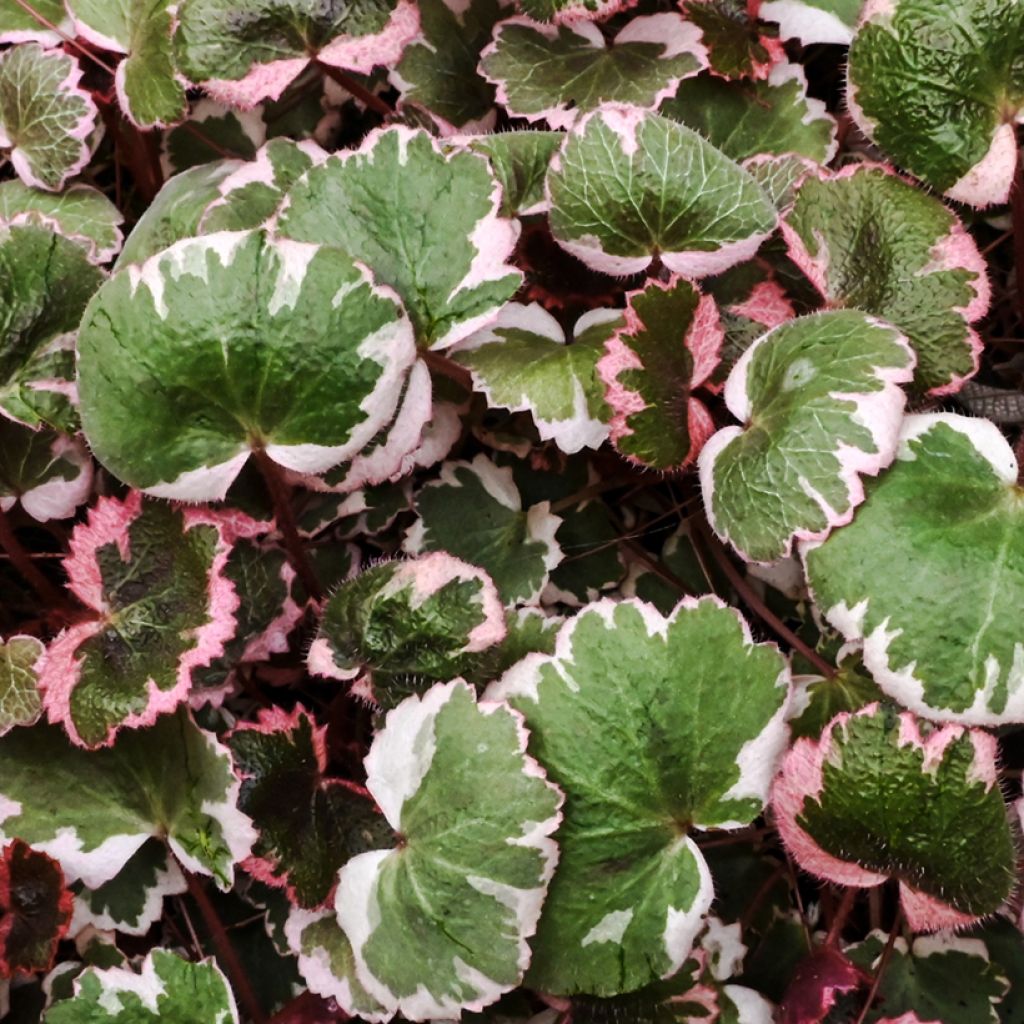

Saxifraga stolonifera Variegata - Creeping saxifrage
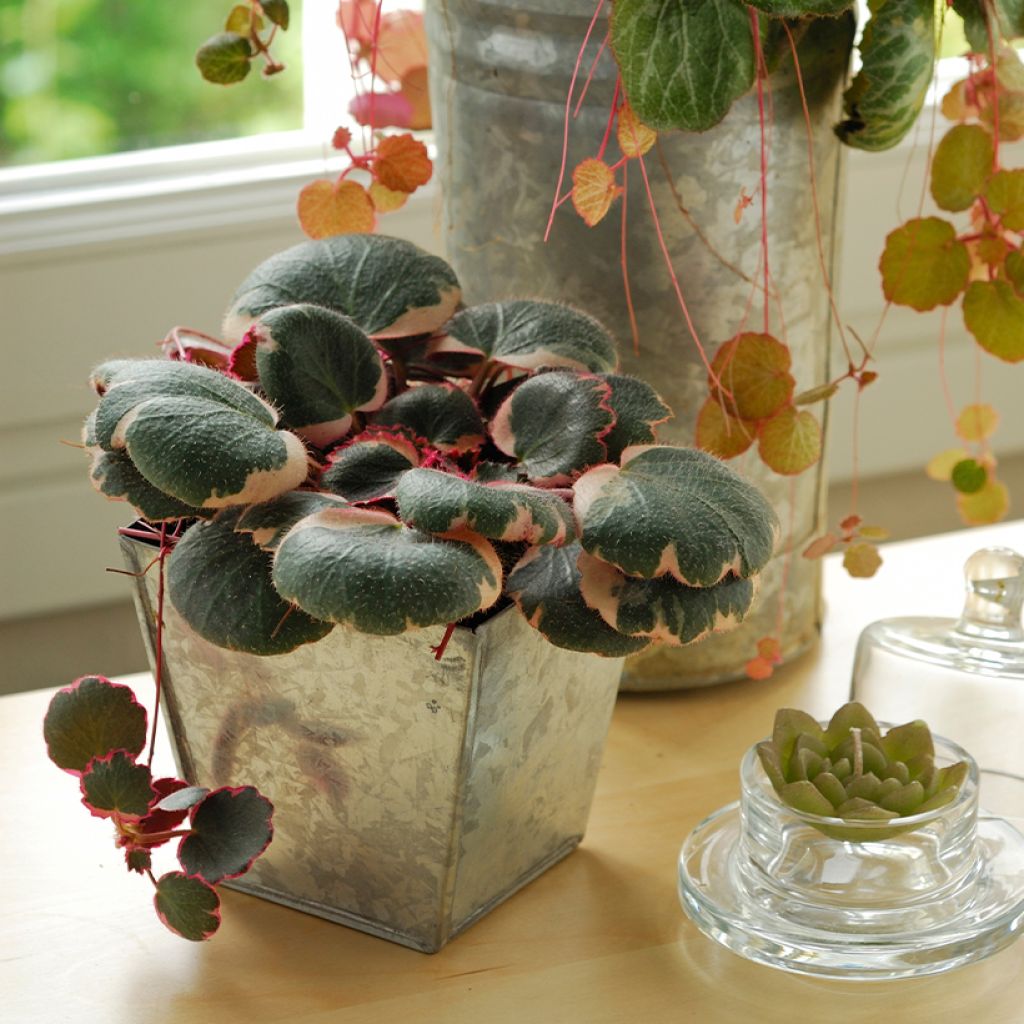

Saxifraga stolonifera Variegata - Creeping saxifrage
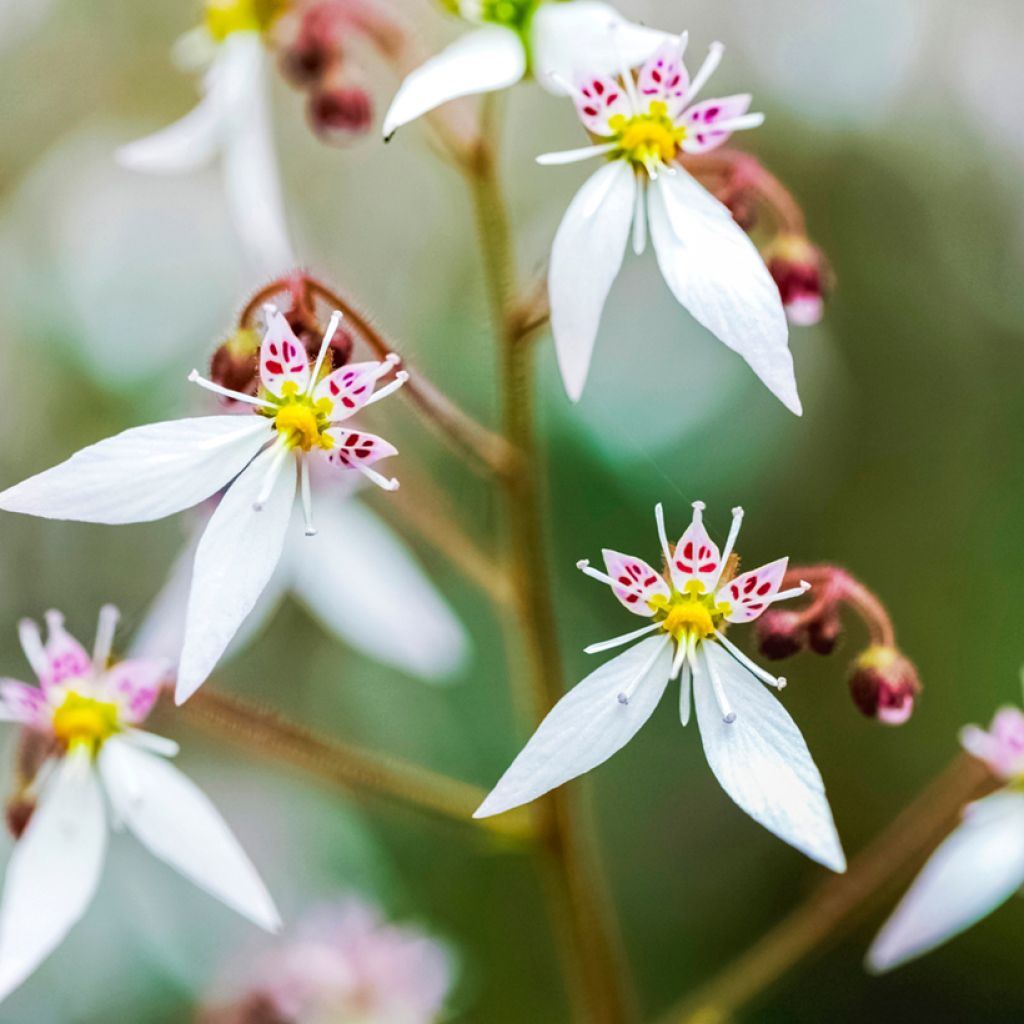

Saxifraga stolonifera Variegata - Creeping saxifrage
Saxifraga stolonifera Variegata - Creeping saxifrage
Saxifraga stolonifera Variegata
Creeping saxifrage, creeping sailor, strawberry begonia, strawberry geranium,strawberry saxifrage
This item cannot be shipped to the selected country
Delivery charge from 6,90 €
More information
Shipping country:
-
-
-
-
-
-
-
-
-
-
-
-
-
-
-
-
-
-
-
-
-
-
-
-
-
-
-
-
-
-
-
-
Schedule delivery date,
and select date in basket
This plant carries a 30 days recovery warranty
More information
We guarantee the quality of our plants for a full growing cycle, and will replace at our expense any plant that fails to recover under normal climatic and planting conditions.
From 7,90 € for pickup delivery and 6,90 € for home delivery
Express home delivery from 8,90 €.
Description
The Saxifraga stolonifera 'Variegata', commonly known as spider saxifrage or Old Man's Beard, is a small plant with delicately variegated foliage, featuring a creeping habit when planted in the ground or a trailing habit when grown in hanging baskets. Its rounded, dentate, velvety leaves highlighted by silver veins and creamy-white borders add a touch of natural elegance to your décor. It fits perfectly in a boho-chic interior or a winter garden. To ensure its vitality, place it in a bright spot and keep the substrate slightly moist, avoiding overwatering.
The Saxifraga stolonifera 'Variegata' belongs to the Saxifragaceae family. Native to East Asia, particularly China and Japan, the Saxifraga stolonifera thrives naturally in forests, shrublands, and prairies, often on rocks at altitudes between 400 and 4,500 metres. In its natural habitat, it flourishes in shady, humid environments, preferring well-drained soil rich in organic matter. This herbaceous perennial spreads via stolons capable of producing seedlings, much like strawberry plants. At maturity, its foliage reaches a height of 10 to 20 cm with a spread of up to 50 cm or more. Its leaves, arranged in basal rosettes, are rounded, deep green with silver veins and creamy-white edges, and have a velvety texture. They persist through winter. Its flowering, which occurs between May and August, reveals delicate zygomorphic white flowers, with two longer petals.
When grown indoors, this plant prefers bright indirect light or partial shade, avoiding direct sunlight which may scorch its delicate foliage. Moderate to high ambient humidity is recommended, along with an ideal temperature between 5 and 20°C. The Saxifraga stolonifera can also be grown outdoors as a shade ground cover as it tolerates minimum temperatures down to -20°C, making it hardy in many regions.
The Saxifraga stolonifera 'Variegata' will bring plenty of charm to your home. Perfect for a conservatory or a bright room, it’s sure to catch the eye! Display it in a hanging basket or place it on a high shelf. Pair it with plants that have similar needs, such as the Chlorophytum comosum 'Variegatum' with its long white-variegated leaves.
Report an error about the product description
Saxifraga stolonifera Variegata - Creeping saxifrage in pictures




Foliage
Plant habit
Flowering
Botanical data
Saxifraga
stolonifera
Variegata
Saxifragaceae
Creeping saxifrage, creeping sailor, strawberry begonia, strawberry geranium,strawberry saxifrage
China, Southeast Asia
Other Houseplants
View all →Location
Location
Maintenance and care
Potting advice, substrates and fertilisers
Houseplant care
Disease and pest advice
Maintenance and care
This item has not been reviewed yet - be the first to leave a review about it.
Haven't found what you were looking for?
Hardiness is the lowest winter temperature a plant can endure without suffering serious damage or even dying. However, hardiness is affected by location (a sheltered area, such as a patio), protection (winter cover) and soil type (hardiness is improved by well-drained soil).

Photo Sharing Terms & Conditions
In order to encourage gardeners to interact and share their experiences, Promesse de fleurs offers various media enabling content to be uploaded onto its Site - in particular via the ‘Photo sharing’ module.
The User agrees to refrain from:
- Posting any content that is illegal, prejudicial, insulting, racist, inciteful to hatred, revisionist, contrary to public decency, that infringes on privacy or on the privacy rights of third parties, in particular the publicity rights of persons and goods, intellectual property rights, or the right to privacy.
- Submitting content on behalf of a third party;
- Impersonate the identity of a third party and/or publish any personal information about a third party;
In general, the User undertakes to refrain from any unethical behaviour.
All Content (in particular text, comments, files, images, photos, videos, creative works, etc.), which may be subject to property or intellectual property rights, image or other private rights, shall remain the property of the User, subject to the limited rights granted by the terms of the licence granted by Promesse de fleurs as stated below. Users are at liberty to publish or not to publish such Content on the Site, notably via the ‘Photo Sharing’ facility, and accept that this Content shall be made public and freely accessible, notably on the Internet.
Users further acknowledge, undertake to have ,and guarantee that they hold all necessary rights and permissions to publish such material on the Site, in particular with regard to the legislation in force pertaining to any privacy, property, intellectual property, image, or contractual rights, or rights of any other nature. By publishing such Content on the Site, Users acknowledge accepting full liability as publishers of the Content within the meaning of the law, and grant Promesse de fleurs, free of charge, an inclusive, worldwide licence for the said Content for the entire duration of its publication, including all reproduction, representation, up/downloading, displaying, performing, transmission, and storage rights.
Users also grant permission for their name to be linked to the Content and accept that this link may not always be made available.
By engaging in posting material, Users consent to their Content becoming automatically accessible on the Internet, in particular on other sites and/or blogs and/or web pages of the Promesse de fleurs site, including in particular social pages and the Promesse de fleurs catalogue.
Users may secure the removal of entrusted content free of charge by issuing a simple request via our contact form.
The flowering period indicated on our website applies to countries and regions located in USDA zone 8 (France, the United Kingdom, Ireland, the Netherlands, etc.)
It will vary according to where you live:
- In zones 9 to 10 (Italy, Spain, Greece, etc.), flowering will occur about 2 to 4 weeks earlier.
- In zones 6 to 7 (Germany, Poland, Slovenia, and lower mountainous regions), flowering will be delayed by 2 to 3 weeks.
- In zone 5 (Central Europe, Scandinavia), blooming will be delayed by 3 to 5 weeks.
In temperate climates, pruning of spring-flowering shrubs (forsythia, spireas, etc.) should be done just after flowering.
Pruning of summer-flowering shrubs (Indian Lilac, Perovskia, etc.) can be done in winter or spring.
In cold regions as well as with frost-sensitive plants, avoid pruning too early when severe frosts may still occur.
The planting period indicated on our website applies to countries and regions located in USDA zone 8 (France, United Kingdom, Ireland, Netherlands).
It will vary according to where you live:
- In Mediterranean zones (Marseille, Madrid, Milan, etc.), autumn and winter are the best planting periods.
- In continental zones (Strasbourg, Munich, Vienna, etc.), delay planting by 2 to 3 weeks in spring and bring it forward by 2 to 4 weeks in autumn.
- In mountainous regions (the Alps, Pyrenees, Carpathians, etc.), it is best to plant in late spring (May-June) or late summer (August-September).
The harvesting period indicated on our website applies to countries and regions in USDA zone 8 (France, England, Ireland, the Netherlands).
In colder areas (Scandinavia, Poland, Austria...) fruit and vegetable harvests are likely to be delayed by 3-4 weeks.
In warmer areas (Italy, Spain, Greece, etc.), harvesting will probably take place earlier, depending on weather conditions.
The sowing periods indicated on our website apply to countries and regions within USDA Zone 8 (France, UK, Ireland, Netherlands).
In colder areas (Scandinavia, Poland, Austria...), delay any outdoor sowing by 3-4 weeks, or sow under glass.
In warmer climes (Italy, Spain, Greece, etc.), bring outdoor sowing forward by a few weeks.

































